Back to top: Panels
Kitchen Rooms
Room D1 is considered the main working area in the kitchen, equipped with essential cooking equipment used for meal preparation, including special platforms for placing jars. Additionally, many pots, jars, and cups were found in this room, indicating a variety of tools used for cooking and storage. This variety reflects the advancements in food preparation and storage techniques. Room D3, although smaller in size, holds comparable significance to Room D1. The walls of Room D3 are designed with considerable thickness, contributing to the preservation of coolness, which reflects an advanced understanding of food storage and preservation techniques of the time. This design was crucial for maintaining the quality of stored food, highlighting notable progress in technical knowledge related to resource management. The room also features shelves, represented by a row of bricks extending along the northern and western walls of the room. Room D2 (iwan), on the other hand, served as a corridor connecting Rooms D1 and D3, contributing to the organization of movement within the kitchen and enhancing its efficiency. These rooms were constructed in a manner that mirrors the corresponding sector in the western part of the palace, known as the palace storage sector B.
Back to top: Panels
Women in Light of Seal Impressions
Most of the seals discovered at Urkesh are associated with Queen Uqnitum and some of her courtiers, including the nurse and the cook. These seals were used to seal boxes, jars, bags, and baskets, indicating her vital role in the daily life and administrative practices of the palace. The seal impressions related to Queen Uqnitum depict her seated on a chair, holding a conical cup in her hand, along with a depiction of a bird table, which appears in most of the seal impressions at Urkesh. These impressions also show two women playing the lyre, suggesting a ceremonial or banquet scene. This scene reflects the cultural and symbolic significance of these celebrations in the royal court. In one seal impression related to the nurse Zamena, Queen Uqnitum is shown holding the heir apparent in her lap, with a star above the child’s head. This scene symbolizes the queen’s role in appointing the heir and highlights her significant role in the political life of the kingdom.
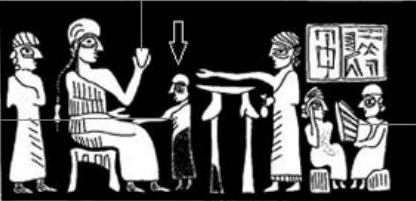
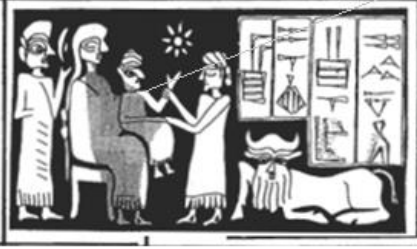
The seal impression related to the cook depicts a scene relevant to her profession, showing a female servant bending over her work. It is evident that she is stirring, using a tool likely employed for churning Buttermilk in two jars. In the background, there is a “GÁR” mark, representing the symbol “life,” which means “cream” or “butter,” indicating that they were making it. Above this mark, there are two pieces of meat hanging, while on the other side of the impression, a man is shown holding a knife and leading a sheep, with a crescent in the background. This seal provides clear evidence of food preparation activities. Additionally, another seal supports this evidence; the seal impression i88 shows figures engaged in what appears to be the preparation of something in jars, similar to food preparation. The scene includes a large jar that requires two people to deal with it, and another medium-sized jar that can be managed by one person alone. Seals play an important role in representing the image of women in Urkesh by showing their diverse roles in society. Some scenes on the seals depict the various professional activities that women were involved in, such as nursing, music, cooking, and administrative and political roles. These seals provide an in-depth view of both the typical and extraordinary activities that women engaged in during that period. Thus, these seals can be seen as mirrors reflecting the role of women in ancient society, offering a deeper understanding of their roles and impact on daily life within the palace and the broader community. They also highlight the supervision of palace activities, including cooking and preparing banquets, underscoring the vital role that the kitchen played in royal life.
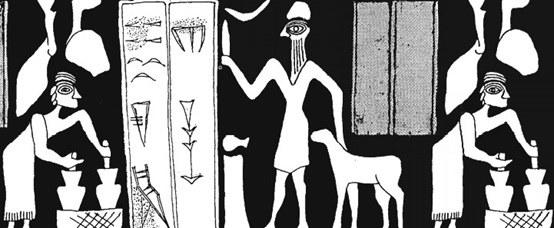
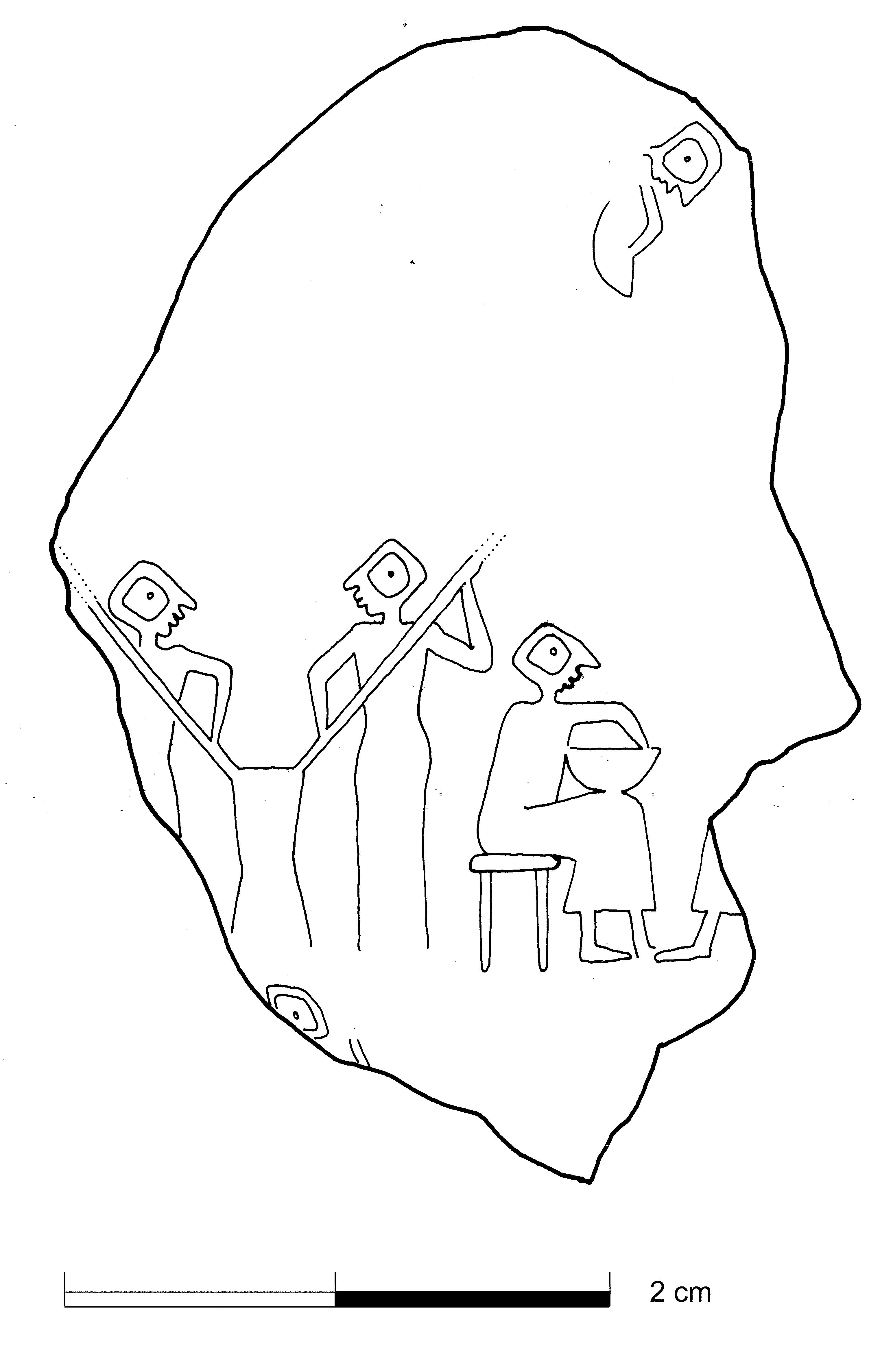
Back to top: Panels
Fire Structures
The tannur is a clay structure, slightly cylindrical or conical in shape, and is considered a key element in traditional kitchens in the Near East. The use of the tannur dates back to the Neolithic period and continues to the present day. The tannur is used to bake a specific type of bread, usually either leavened or unleavened, by placing the dough directly on the tannur’s wall until it separates when cooked and is ready to eat.
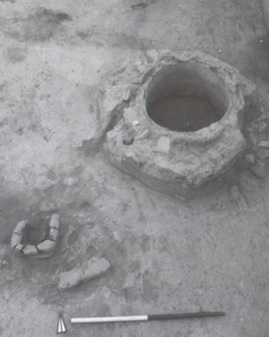
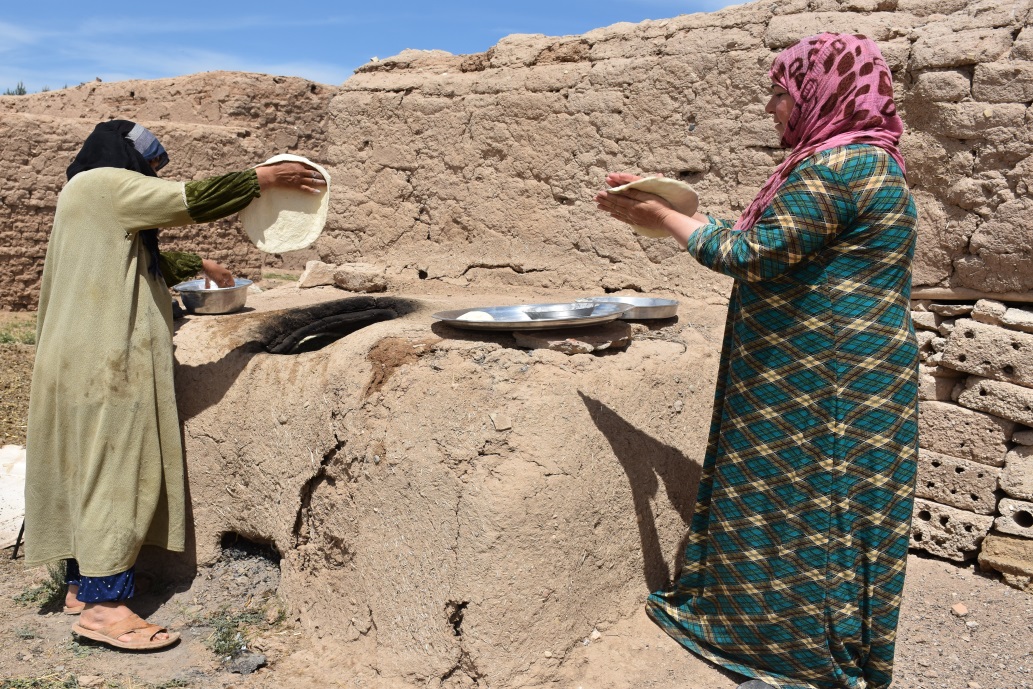
The archaeological record has revealed a hearth in the shape of a horseshoe, which in ancient times was used for lighting, heating, and cooking. The hearth found in the Urkesh kitchen was undoubtedly intended for cooking, given its proximity to the tannur and its construction from the same type of clay used for the tannur and associated platforms. Additionally, remains of legume seeds were found inside it, supporting the hypothesis that it was primarily used for cooking.
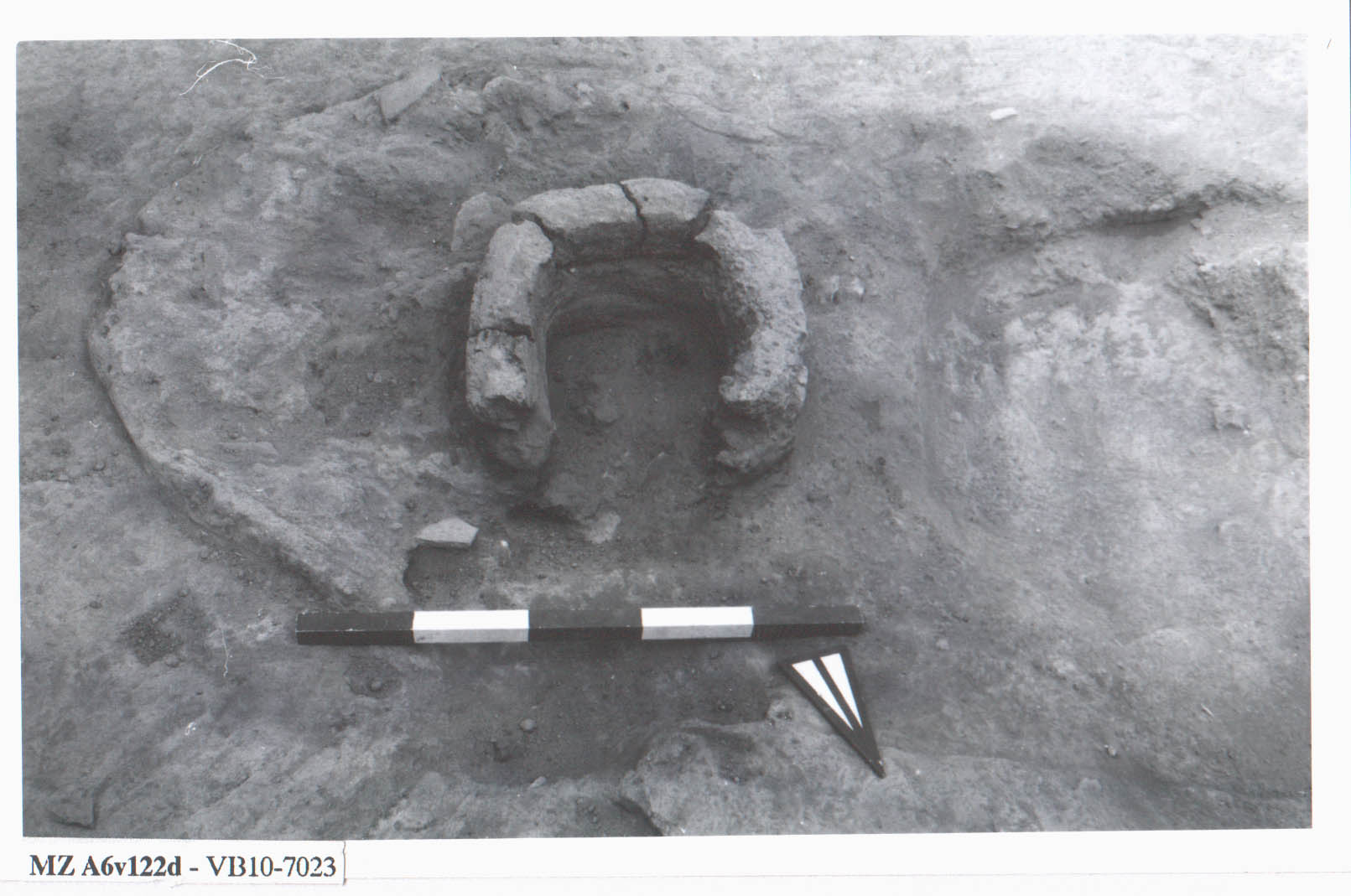
Among the pots uncovered during the archaeological excavations that are functionally related to cooking, there are pots with two handles attached to the rim. These pots are made in pebble-tempered ware and contain small quartz pebbles which are efficient heat retainers. These pots are characterized by red brick which blackens over time through exposure to fire. They include spherical pots with a hole mouth and rounded bases, designed for easy placement on the hearth.

Back to top: Panels
The Kitchen Through Time
This kitchen was used for several generations, as the archaeological excavations have revealed various indicators of the continued use of the area, including restoration work carried out on its walls. For instance, it is observed that the northern wall of Room D1 was restored by placing soft gray bricks over the original red brick wall, while the base is made of stone. Additionally, the threshold of the door connecting Rooms D1 and D2 was restored; it consists of a line of three bricks, with the side bricks being red and the middle brick grey, which corresponds with the restoration of the northern wall of Room D1 in terms of the color difference of the mud bricks. Another piece of evidence is a seal impression related to Queen Taram-Agade, daughter of the Akkadian Emperor Naram-Sin, which depicts a scene of animal combat.
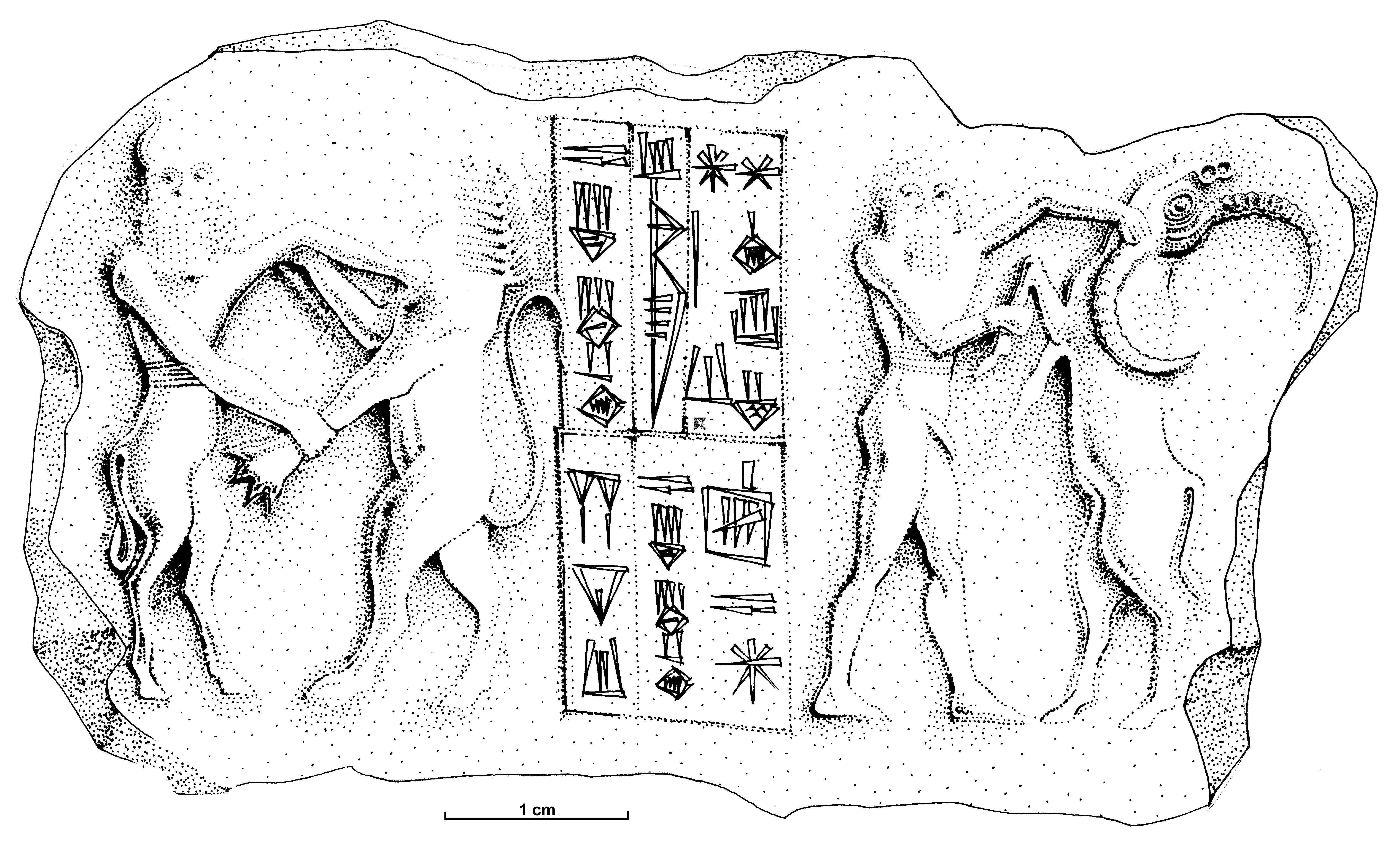
This indicates that she held an important political or administrative position in the court. By reading these panels, visitors can infer many aspects of the kitchen, such as how work was organized, the roles of different individuals in food preparation, and the kitchen’s significance in daily palace life. They are not merely historical information but educational tools that allow visitors to connect personally with the past and understand the complexities of daily life at Tell Mozan. They provide detailed information that helps visitors envision the living environment of the third millennium BC and comprehend the central role the kitchen played in royal life.
Back to top: Panels